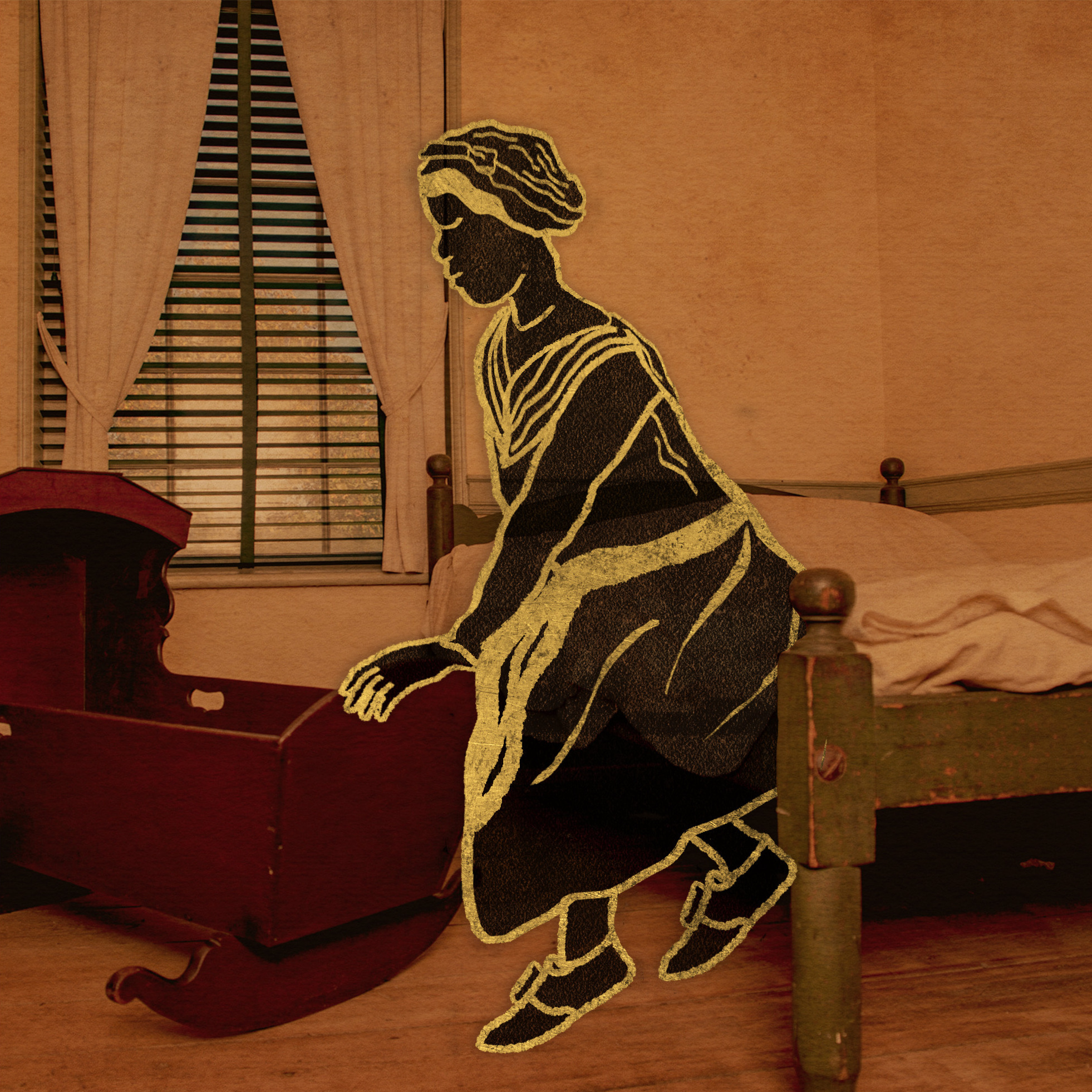
There are many documents that detail Violet’s story, though her story is always seen through the lens of the white person writing the documents.
Violet was born in or around 1751. Violet was probably born on the Delaware landholdings of the Dickinson family. She was likely enslaved from the time of her birth. The Dickinson family members that established their Delaware plantation in 1740 were Samuel Dickinson, his second wife, Mary Cadwalader Dickinson, and their two sons, John and Philemon.
The first documented mentions of Violet were from 1761 to 1763, while she was enslaved by the Dickinson family. She was listed alongside other people who were issued clothing. Violet appeared in Mary Cadwalader Dickinson’s ledger at various times, receiving a jacket and petticoat, stockings, and shifts.
Violet was bound to serve St. Jones Neck tenant William Howell as the result of a lease agreement between Howell as tenant and Philemon and John Dickinson as landowners. She had to serve William Howell from 1767 to the end of his tenancy alongside Abraham, Hannibal, Flora, and Ned.
In an undated document, which has been dated by later researchers to c. 1775-1777, “Violet now at R. Johnson’s” was how she was listed by John Dickinson among the Black people he was enslaving.
Violet became John and Mary Dickinson’s enslaved nursemaid, tasked with taking care of their daughters Sarah, nicknamed Sally, and Mariah. One letter Mary Norris Dickinson wrote to her aunt stated, “Sallie sleeps with her Cousin in a comfortable little room and Violet is in the next room to call upon.” Since Violet slept in a room next door to the children’s room she was likely expected to be on-call throughout the night.
John Dickinson enacted a conditional manumission on August 28, 1777, naming people who would gain their freedom in twenty-one years from the date of the manumission. Violet was listed in the document amongst the adult women.
Violet was unconditionally freed in a 1781 manumission by John Dickinson at the same time as five other people. She was thirty years old. Shortly after gaining her freedom, Violet was indentured to John Dickinson for seven years and left her mark at the bottom of the indenture document. That indenture also revealed her mother’s name: Rose.
Violet, although she had already been freed and subsequently indentured, appeared on John Dickinson’s unconditional manumission of May 7, 1786. Two women named Violet were listed with the adult women on that manumission. The woman called “Violet the Younger” is most likely a different person. The woman simply called “Violet” in the 1786 manumission is most likely the same Violet who was already freed and indentured in 1781, who would have been approximately 35 years old at the time.
Later in life, Violet shared recollections from her youth with Sally Norris Dickinson. Most memories were connected to the Dickinson family. Violet’s memory of John Dickinson’s return to the Plantation from his studies in England appeared as did her memory of Samuel Dickinson’s death having been so sudden that none of his sons arrived before it occurred. One of Violet’s poignant recollections described the death and funeral of her own father, Pompey. The funeral procession passed by the mansion on the way to the burial ground. Violet’s mother Rose “continued to live in the little frame cottage on the stream that supplied the Milk house.” The document also revealed Violet’s last name: Brown.
Although Violet provided her memories, they were filtered through Sally twice before being seen by modern researchers. The first filter was when Sally took notes about Violet’s remembrances. The second was when Sally translated those notes into the written narratives that exist today. There’s bias at play here: Violet might not have been comfortable providing the whole, unvarnished truth to a member of the family who had once enslaved her; Sally clearly did not write everything Violet said verbatim as portions are in quotations and others are not; Sally possibly wrote the document in a way that put herself and her family in a favorable light. Though filtered, some words believed to be Violet’s own have lasted through the centuries.
Researchers continue the search for more information about Violet.

